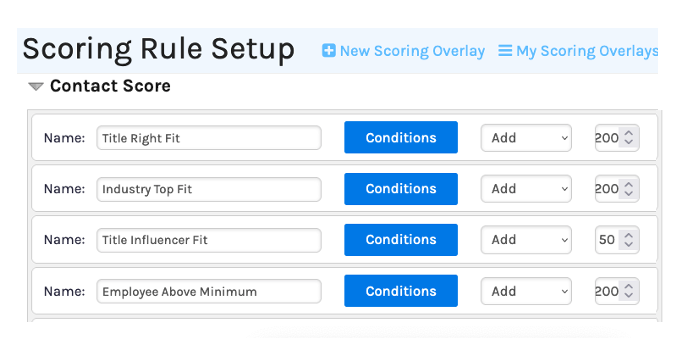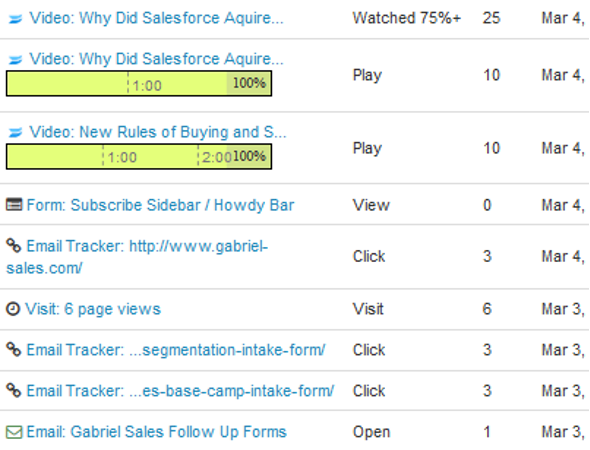
B2B Buyer Trends
B2B Buyer Trends — Seven Things to Know
(Watch Time – 8:00 Minutes)
Summary of B2B Buyer Trends video
In this short educational video we will give you a quick overview of B2B Buyer Trends, including:
- Why B2B leads and buyers need and want lead nurturing and digital pre-sales education
- Why buyers now expect ongoing lead nurturing and content marketing at every stage of their buyers’ journey
- The specific types of contents buyers use during their pre-sales education and buying process
- Buyers increased desire to avoid sales development reps (SDRs) until they feel educated and are ready to buyer
- When video is the most preferred and successful type of content
- How far and committed the top sellers are to sales automation and digital first sales
- The ROI companies committed to lead nurturing and a digital first sales are experiencing
This video (an expert from our extensive four part On Demand Training Seminar – The Digital First Transformation and Sales Automation)
Transcript of B2B Buyer Trends Seven Trends — Seven Things to Know.
Why Leads/Buyers Need Lead Nurturing
First, most buyers are not ready to buy when they first start their digital education. Initially, most buyers are just trying to figure out how to solve a problem. Less than 3% of initial email opens are ready to buy, and even more surprisingly, less than 20% of your pay per click or SEO leads or active buyers. But the positive here is that about 80% of all these early stage leads, we call them marketing qualified leads, will spend money within three to 18 months. So once they engage, you have a short list of potential buyers that expects you to educate and nurture them for an extended period of time, which means your marketing team can’t just run lead gen campaigns and expect the same sales results.
Buyers Now Expect Ongoing Lead Nurturing and Content Marketing at Every Stage of Their Buyers’ Journey (0:48)
Buyers now expect you to share content at every stage of their buyer’s journey to help them move systematically through their process. This starts by you helping them to identify and understand what problems your solution is designed to help them solve through their shortlisting process and even into their validation and consensus building stages. This means you need lead generation campaigns to create awareness to help the buyer understand what problems you solve. Then buyers also expect you to run nurturing campaigns, including both buyer education campaigns and sales automation campaigns to help them with their consideration stages and their preference stages.
Successful Lead Nurturing and Sales Automation Requires Multiple Types and Formats of Digital Sales Education (1:33)
And during these different types of campaigns, buyers want you to share the appropriate type of content in multiple channels so they can control their own buyer’s journey, and they expect you to be prepared to touch them at least 21 times for you to earn their brand awareness and initial trust in to start that process. Most buyers still overwhelmingly prefer to learn about new solutions in email marketing campaigns that are supported by educational content.
However, if you don’t eventually support these email campaigns with paper per click, social media and SEO campaigns, you’ll miss 33% of the market who prefer these channels. And at this stage, the type of content buyers prefer in all three channels are short. How-to videos, educational blog articles in industry insights and stats that help educate the buyer and also help you to demonstrate thought leadership. Then once that lead is generated, you need to be prepared to share multiple types of content to nurture and create demand for your solution. Because buyers leverage all types of content to move a decision forward if they’re consideration and preference stages to become educated enough to make a decision. So what’s required for success? In a recent Merkel survey of B2B buyer trends, 78% of buyers stated they used case studies and use cases in their process, 76% used webcast educational videos and educational blog articles.
68% used white papers, and in 20 21, 50 4% of B2B buyers are now using podcasts. So you need to be prepared to use a wide variety of content in multiple channels to make it easy for the buyer to buy using your buyer education in sales automation campaigns
Buyers Want to Avoid Sales Development Until They Feel Educated and are Ready to Buyer (3:43)
Perhaps the biggest impact of this digital transformation is that buyers now want to avoid sales reps until they feel educated. As a result of this buyer preference for digital first education, 64% of sellers state, they’re now less dependent on sales reps. 80% of buyers don’t want to speak to an SDR until they have completed their pre-sales research. 33% moving to 44% for millennials want to avoid sales completely if possible, and most buyers won’t engage with a sales rep until they’ve consumed at least six to 12 pieces of content. Digital content is now replacing some of the most time consuming in historical tasks of the sales development rep, first and foremost, being all the time and money it takes for pre-sales education of the buyer.
Video is the Preferred Content for Pre-Sales Education and Mid-Stage Buyer Education (4:33)
And in large part, most of this pre-sales education is now being done with video because when it comes to content, we’re both video and text are available on the same page. 72% of buyers would rather use video to learn about your solution using video and email campaigns boost open rates and clickthroughs and video posts have the highest engagement in social media campaigns. And probably the biggest bonus of video is that it leads to conversions or at least predicts conversions because 25 to 45% of buyers that watch a webcast convert into a sales opportunity, and most buyers state they’re ready to engage with sales after watching three to five videos.
Your Most Successful and Largest B2B Sales Competitors are Already Striving for Sales Automation (5:22)
The next thing that’s important to understand about this transformation is the competitive landscape. So Gabriel Sales has been dealing with tech and tech marketing for a long time, and we’ve seen the pendulum swing back and forth between giving SMBs an ability to compete effectively and giving the enterprise the advantage. And right now, the enterprise companies have an edge because they’ve taken meeting the needs of the digital buyer seriously and have driven digital content deeper into the sales process faster.
This was one of the really big changes that occurred during the pandemic because the enterprise was better equipped to immediately be able to deploy their existing marketing resources to digital marketing to support the virtual and remote sales process, and they were able to fund new technologies faster and more effectively when travel budgets were cut. As a result, 75% are now leading with Digital First to support their entire pre-sales process, and in a few short years, the majority of enterprise companies already believe that these new sales processes are as or more effective than their historical processes. In a full 85% of enterprise companies are now committed to building a digital first go-to-market sales process moving forward. And over the next several years, digital spend is once again predicted to double Gartner’s future of sales. Research is now predicting that by 2025, 80% of B2B sales interactions will occur in automated in digital channels.
To compete for and win business will require a commitment to content marketing and nurturing.
Sellers that Implement Lead Nurturing and Digital First Sales Automation Win More Business and Drive More Revenue (7:13)
Finally, what can your business expect when you embrace this digital first transformation? Buyers are already dramatically rewarding sellers for a digital first sales and nurturing process. Sellers that are committed to content marketing after the initial lead has been generated, see their sales team’s opportunity pipeline grow by over 450% in nine to 18 months. It’s harder to get a seat at the table with your buyers if you don’t provide content after you generate that initial lead. And most importantly, and most exciting sellers that do a good job helping buyers buy digitally are now closing at two x the rate of sellers that don’t.





















